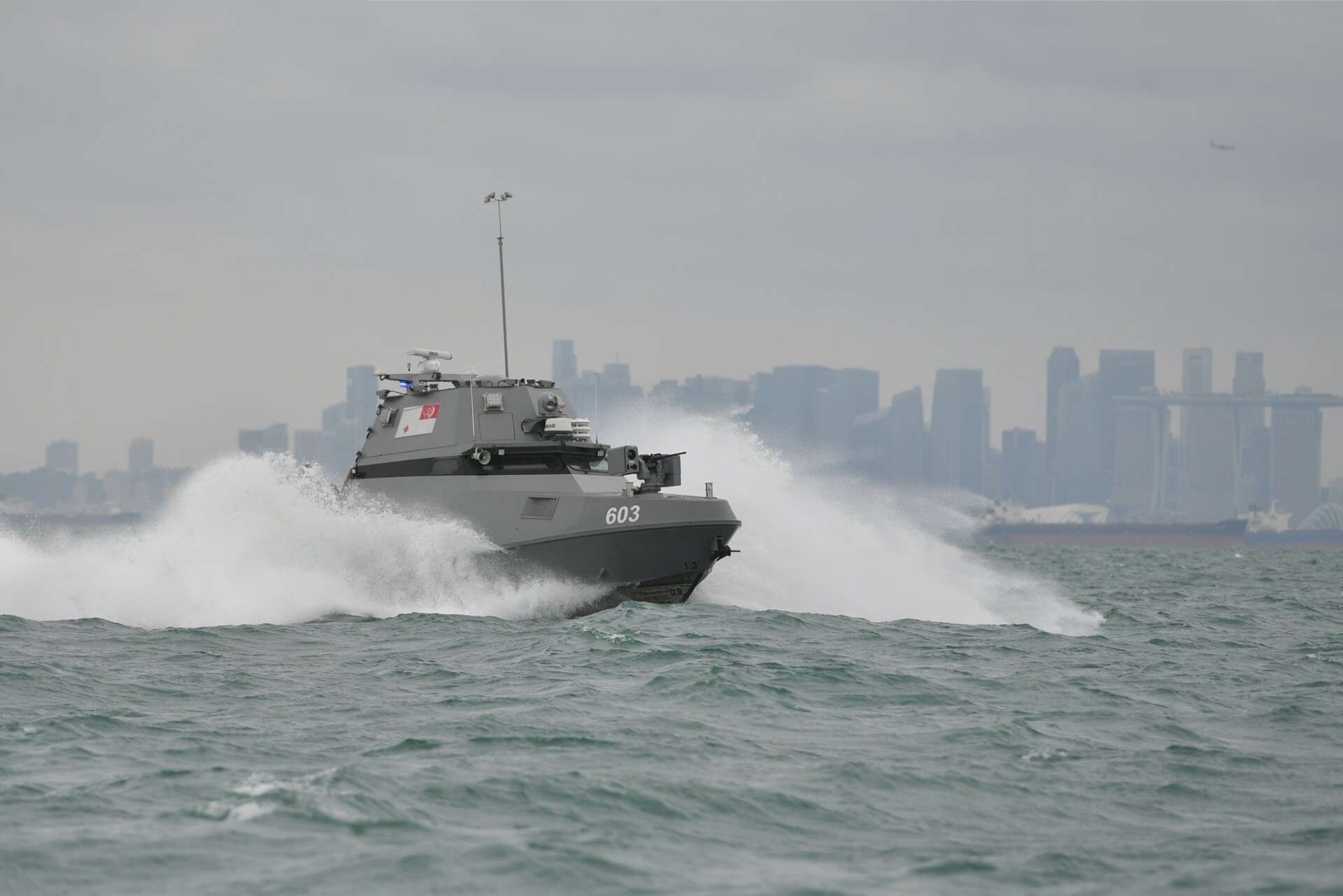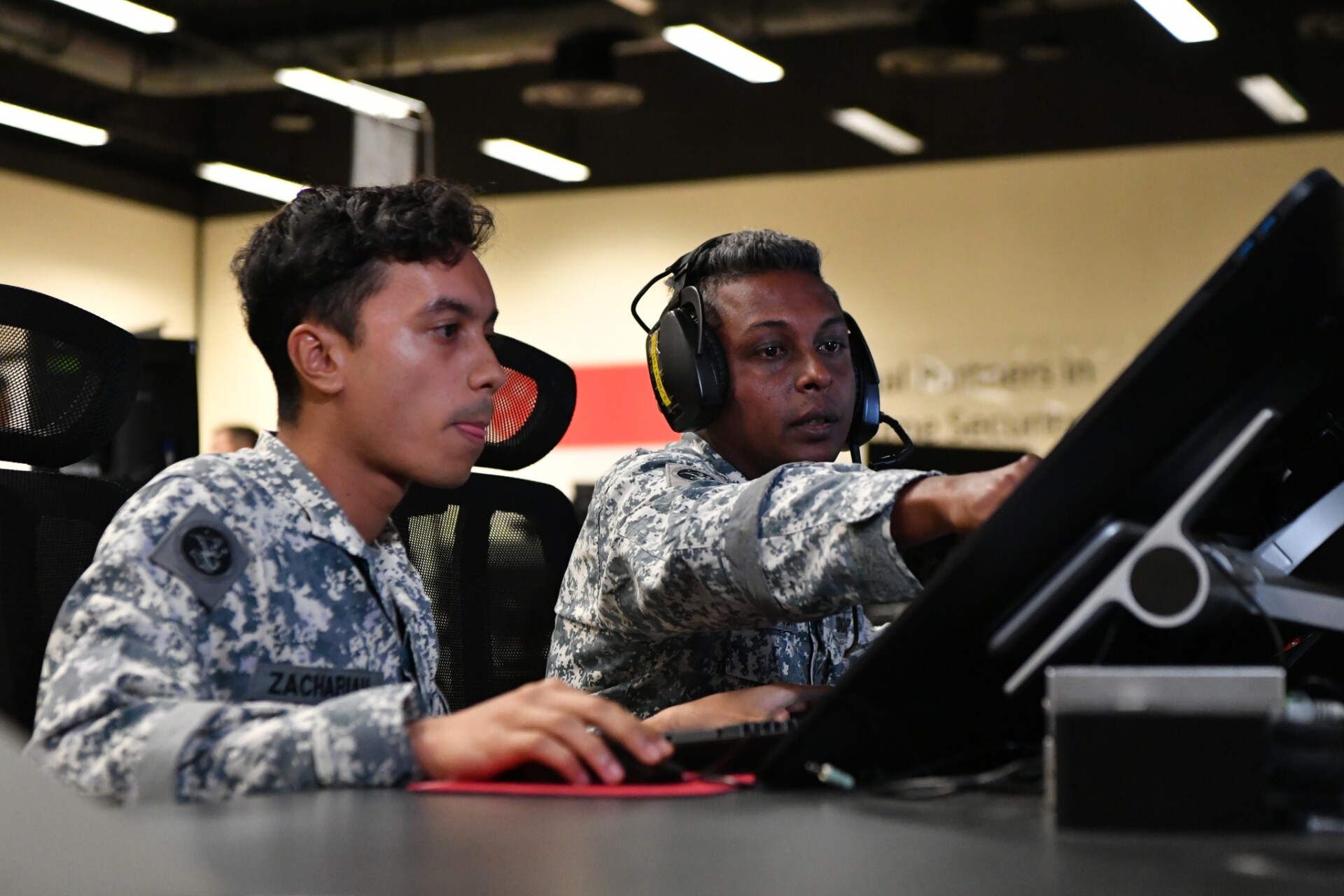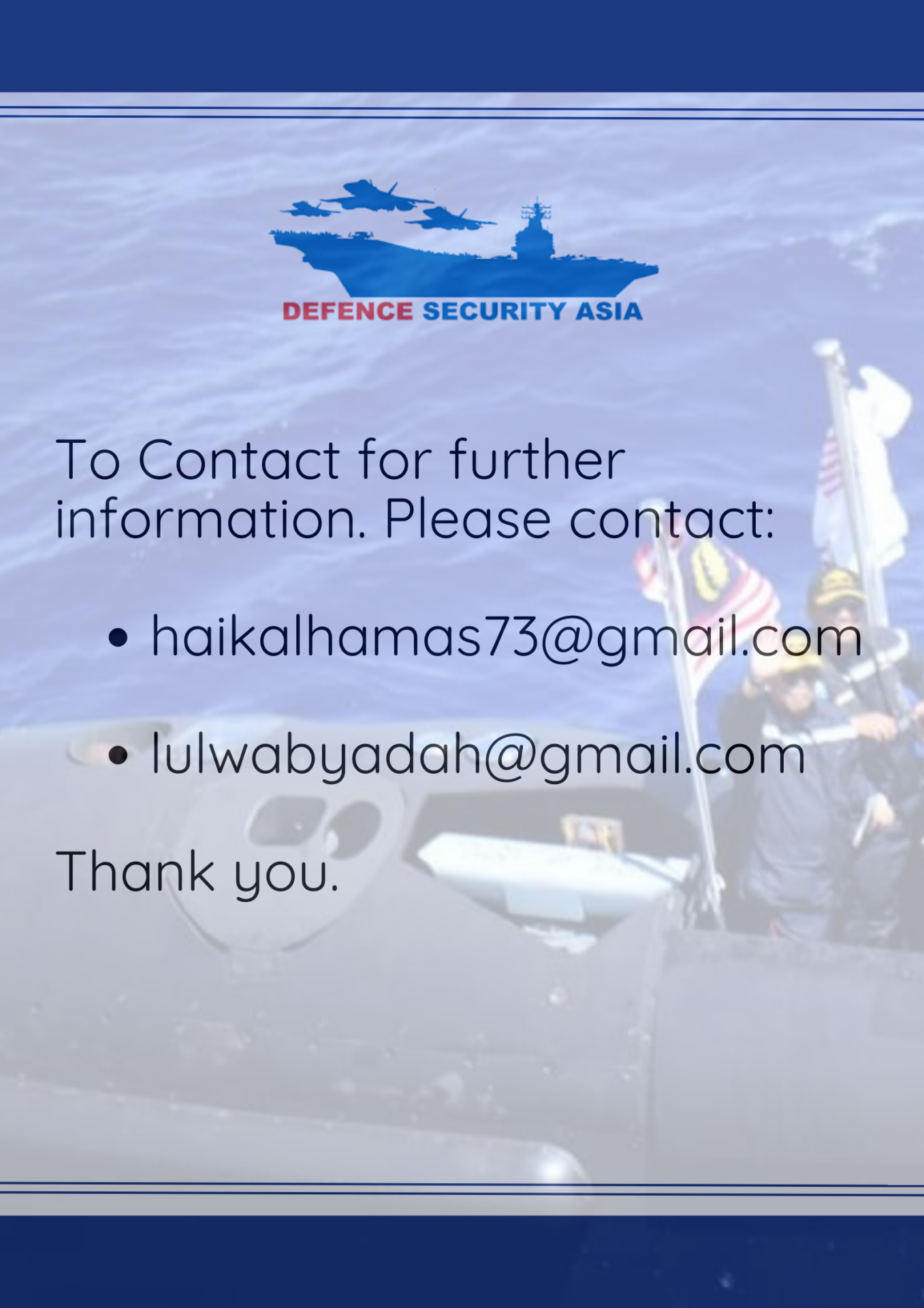Singapore Navy Deploys Maritime Security USVs to Patrol Waters, Monitor Maritime Threats
The Republic of Singapore Navy (RSN) has acquired four Unmanned Surface Vessels (USVs) from an undisclosed source, with three of the vessels delivered to Singapore by the end of last year and commencing operations to patrol the nation’s waters in late January 2025.
(DEFENCE SECURITY ASIA) – The Republic of Singapore Navy (RSN) has commenced operations of its new Unmanned Surface Vessel (USV), known as the MARSEC (Maritime Security) USV, to bolster the country’s maritime border security since last month.
The RSN has acquired four of these USVs from an undisclosed source, with three of the vessels delivered to Singapore by the end of last year.
“The USV’s missions include monitoring sea lanes around Singapore, escorting high-value vessels, and investigating potential maritime threats.”
Each USV measures 16.9 meters in length, can reach speeds of up to 25 knots (approximately 50 km/h), and is capable of continuous operation for up to 36 hours without the need for resupply.
The vessel has a total weight of 30 tonnes.
“The RSN’s USV is capable of autonomous navigation, supported by radar systems and 360-degree cameras.”

The USVs are also equipped with a Remote Weapon System (RWS), which is remotely operated by personnel to execute warning shots or disabling fire when necessary.
“Operating the weapon system requires a ‘man-in-the-loop’ as it involves deliberate human decision-making,” said Lieutenant Colonel Tan Kailing, Commanding Officer of the USV Squadron, as quoted by local media.
Colonel (COL) Thung Yee Meng, Commander of the RSN’s 6th Flotilla, stated that the MARSEC USV is the first of its kind for the Singapore Navy in terms of its advanced level of autonomy.
He further highlighted that the Navy’s investment in unmanned technologies underscores its commitment to innovation in enhancing operational efficiency.
The USVs also enhance the RSN’s ability to monitor and respond to maritime situations effectively.
By providing “persistent coverage” in the Singapore Strait, these unmanned surface vessels allow other naval assets, such as the Littoral Mission Vessels (LMVs), to be deployed for more complex missions and to areas farther from Singapore, according to the Ministry of Defence.

Additionally, the USVs enable the Navy to conduct potentially high-risk maritime missions remotely and safely.
These vessels can be operated autonomously by just a two-person crew from a coastal control station.
In comparison, the RSN’s Independence-class Littoral Mission Vessels, while designed for lean crew operations, require a minimum of 23 personnel.
The RSN’s USVs represent a groundbreaking system due to their high level of autonomy, particularly in Singapore’s busy waters.
This advanced autonomy is made possible by sophisticated collision detection and avoidance systems, as well as a rules-based autonomous navigation algorithm—both developed in Singapore by the Defence Science and Technology Agency (DSTA) and DSO National Laboratories.
— DEFENCE SECURITY ASIA


